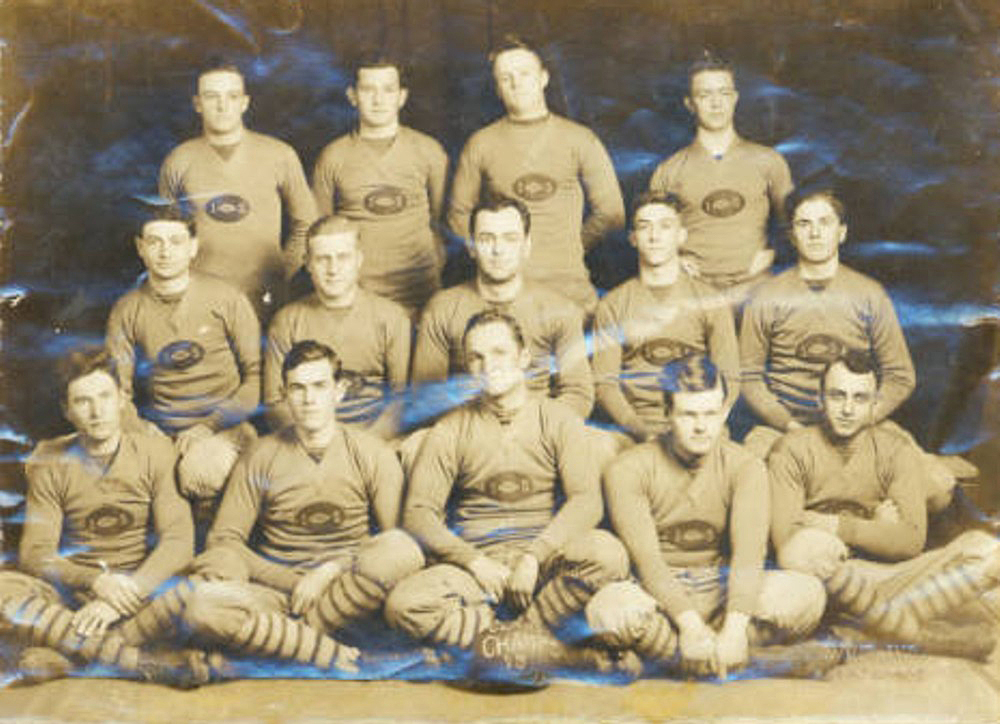LSU Pivotal Football Moments
pivotal college football moment: A decision by a coach or athletic director that changes the momentum of a program or an action by a player that changes the momentum of a game.
pivotal college football moment: A decision by a coach or athletic director that changes the momentum of a program or an action by a player that changes the momentum of a game.
LSU and Arkansas began playing each other annually in 1906 at various sites, including Little Rock and Memphis. Starting in 1913, the game was played annually at the Louisiana State Fair Grounds in Shreveport. The Tigers held a slight 5-4-1 advantage in the series.
E. T. McDonald's second LSU team came into the 1915 game with a 4-1 record while the Razorbacks were 3-0-1 under first-year coach T. T. McConnell.
McDonald made several changes in his lineup to stop the strong end sweeps of the Razorbacks. J.C. "Red" Floyd and R.E. "Red" Rice were shifted to the end positions and Keith Jones moved from guard to center.
Twenty Tiger players and their coach along with 300 or more LSU rooters left Baton Rouge Friday night for the train ride to Shreveport. When they got to Shreveport Saturday morning, many Tiger backers wired back to Baton Rouge to get more funds to bet against the Arkansas rooters on the "pick 'em" game.
Reports on the game were sent to Baton Rouge for fans gathered at the Theatre Louisiana and the Elks Club. Up in Fayetteville, about 400 Arkansas students and a delegation of townspeople gathered at the Palace drug store to hear reports of the game over a telegraph wire.

1915 LSU football team (LSU Libraries Digital Collections)
Razorbacks Win First Half
"An enormous crowd of at least 8,000 people" saw Arkansas outplay the Tigers for two quarters before LSU came back "in a rush" in the third period.
The Razorbacks got the jump on LSU in the first seven minutes of play when four straight completions by QB T.H. Harden sent them down the field 47y to LSU's 20. From there, Gene Davidson, "the giant halfback," ran around left end for a touchdown. Harden kicked the extra point. Arkansas 7 LSU 0
LSU made defensive adjustments and held the Razorbacks scoreless the rest of the half but couldn't mount an effective drive of their own. Arkansas almost added to their lead when a defender batted down a pass from the LSU 20 to prevent a touchdown.
.jpg)
"Black and white photograph of an LSU Tigers football game, circa 1915."
Probably the LSU-Arkansas game at State Fair Grounds in Shreveport.
(LSU Libraries Digital Collections)
McDonald Makes Halftime Changes
Payne Breazeale wrote for the New Orleans Item: "Between halves McDonnell must have shot some dope into his men, for they came back with a vim." J.S. Pittman replaced Henry Waldon in the LSU line to add strength on the line, especially on offense. It also helped that Bill Lewis returned to action after missing time in the first half with an injury.
However, the changes didn't have much effect until ten minutes elapsed in the third quarter. Showing their depth at running back, the Tigers finally moved the ball when J.C. Rodrigue replaced the injured FB Chick Green. As if given a jolt of energy, LSU began moving down the field, starting with a 25y gain on Rodrigue's first carry. Shortly thereafter, he darted around right end for another 15y. Alfred Reid plunged up the middle for 10 before Rodrigue zipped for 20 more. However, Arkansas finally rose up and forced LSU into a fourth down on the Razorback 35. Himes faked a punt and passed to Edmunds, but he was stopped short of the first down marker.
With Rodrigue showing his defensive prowess by tearing through the Razorback line three times to stop runners in their tracks, the Tigers soon had the ball back after a punt. They quickly moved to the 20. From there, QB Lee Himes tossed a pass to Lewis in the end zone. However, Himes missed the PAT to leave the score Arkansas 7 LSU 6.
.jpg)
"Black and white photograph of an LSU Tigers football game, circa 1915."
Probably the LSU-Arkansas game at State Fair Grounds in Shreveport.
(LSU Libraries Digital Collection)
The Tigers nearly took the lead in the final minutes of the third period when a long pass into the end zone was negated by an offensive interference penalty.
LSU finally took the lead in the fourth quarter. Phil Cooper, "the Giant Indian tackle" from Tangipahoa Parish, led the interference on "tackle-around-tackle" plays as he cut down the Arkansas defenders. After several "brilliant end runs" by Lewis and Rodrigue, Himes connected on "a perfect pass" for 20y to E Ray Edmunds, who took the ball in stride for the go-ahead touchdown. Himes "kicked a most difficult goal" to make it LSU 13 Arkansas 7.
Edmunds Saves the Day
The Razorbacks came back and would have snatched victory from the jaws of defeat but for a "wonderful piece of football" by Edmunds. In the gathering darkness, the "hefty end" snatched an almost perfect pass from the outstretched arms of an Arkansas back a yard in front of the goal line. Three Tiger runs gained nothing to force LSU into punt formation when time expired.
The Arkansas yearbook attributed the defeat to "bad luck—several crippled men—and over-confidence induced by our easily scoring the first touchdown."
FINAL SCORE: LSU 13 ARKANSAS 7
Reference
The Fighting Tigers II: LSU Football, 1893-1980, Peter Finney (Revised edition 1980)
The Fighting Tigers II: LSU Football, 1893-1980, Peter Finney (Revised edition 1980)